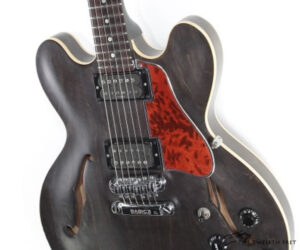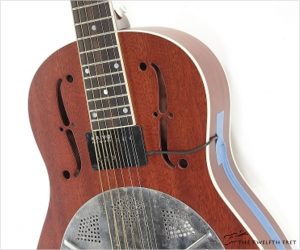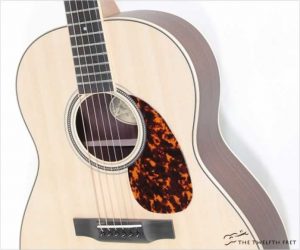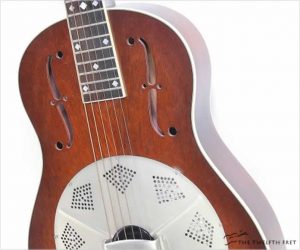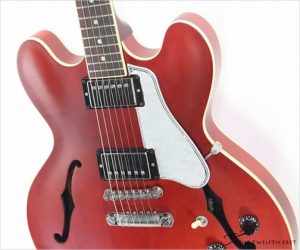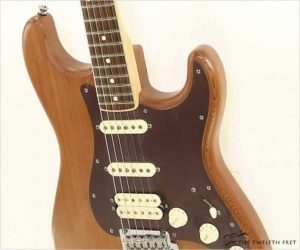For 2006, the Memphis plant introduced the Gibson Satin 335, a somewhat stripped down version of the classic design. Most noticeably, the fingerboard was unbound and the finish is satin – sunburst, cherry or translucent black as seen here. Later versions seem to have restored the fingerboard binding. These models were discontinued with the Memphis plant itself in 2019.
Satin Finish
This National M2 Mahogany single cone resophonic guitar was built during 2019 in San Luis Obispo, California. It is equipped with an aftermarket Krivo humbucking pickup. The M1 and M2 models are currently out of production, and were built from 1990 to 1994 and again from 2003 to at least 2019. The National M2 Mahogany was National ResoPhonic’s earliest single-cone model.
This instrument has sold
MORE →Part of the Larrivee Recording series, the Larrivee L03R is an American made instrument with excellent craftsmanship, tone and value. Back in the early seventies a young Jean-Claude Larrivee created the L body shape which has become a staple of the Larrivee guitar line. This body shape is similar to a classical body design and features a Symmetrical Parabolic X-Bracing pattern.
This National M2 single cone resophonic guitar was built during 2007 in San Luis Opisbo, California. The M1 and M2 models are currently out of production, and were built from 1990 to 1994 and again from 2003 to at least 2012. The National M2 was National ResoPhonic’s earliest single-cone model. The M1, produced around the same time, was the same general construction but was a Tri-Cone model.
This instrument has sold
MORE →The Fender Reclaimed Redwood Stratocaster is one of the more unusual guitars to come from Fender in recent times, and is built with old-growth Redwood from a decommissioned bridge in Bakersfield, California.
This instrument has sold
MORE →